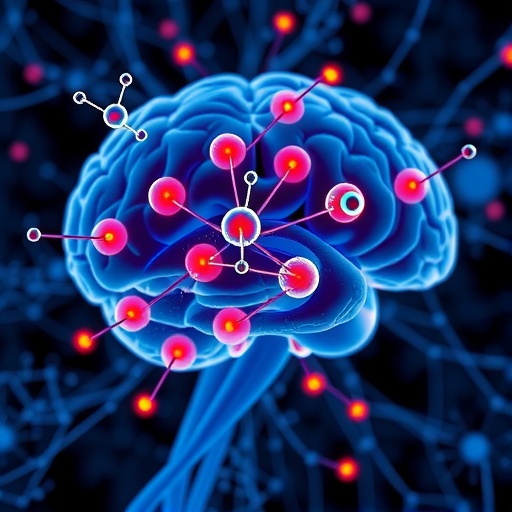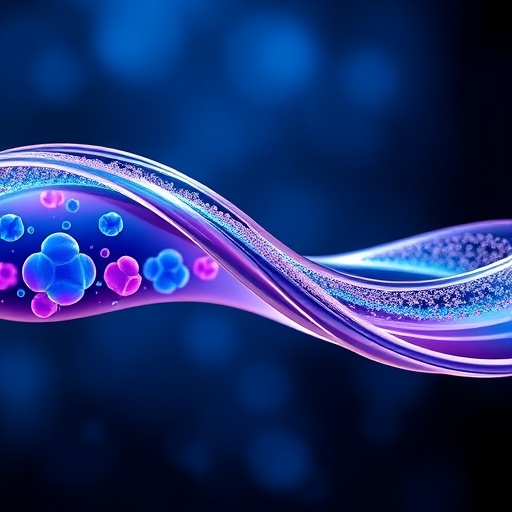Brain cancer persists as one of the most formidable challenges in oncology, with glioblastoma (GBM) representing the apex of its lethality and treatment resistance. Characterized by rapid proliferation, diffuse infiltration, and profound resistance to conventional therapies, GBM drastically shortens patient survival and erodes quality of life through a range of neurological deficits such as chronic headaches, seizures, cognitive deterioration, and behavioral alterations. Despite decades of incremental advancements in surgical resection, radiotherapy, and chemotherapy, the median survival often extends only to 15 months after diagnosis, underscoring an urgent imperative to unravel novel molecular targets amenable to therapeutic intervention.
A groundbreaking review recently published in the Chinese Medical Journal, spearheaded by Professor Ajaikumar B. Kunnumakkara of the Indian Institute of Technology Guwahati and Assistant Professor Alan Prem Kumar from the National University of Singapore, casts a pioneering spotlight on nuclear receptors (NRs) as promising yet underutilized molecular switches in brain cancer biology. These ligand-activated transcription factors orchestrate broad transcriptional programs essential for cellular metabolism, immune regulation, and survival, yet their intricate roles in brain tumorigenesis and treatment evasion have remained largely enigmatic until now. The review meticulously dissects the regulatory networks influenced by NRs and proposes an integrated framework to leverage their therapeutic potential in combatting brain malignancies.
At the molecular level, nuclear receptors function as dynamic transcriptional regulators. They sense diverse endogenous ligands—ranging from steroid hormones to metabolic intermediates—and transduce these signals by binding specific DNA response elements, effectuating precise modulation of gene expression. Aberrant NR signaling rewires critical oncogenic pathways that underpin hallmark cancer traits including sustained proliferative signaling, resistance to cell death, invasion, and immune escape. Particularly in GBM, altered NR activity intersects with notorious pathways such as PI3K/Akt, NF-κB, EGFR, and Wnt/β-catenin, amplifying tumor aggressiveness and underpinning therapeutic resistance mechanisms.
The comprehensive analysis delineates several key nuclear receptor subtypes that play differential roles in glioma biology. Androgen receptors (ARs) have emerged as potent drivers of tumor survival and radioresistance, with preclinical data demonstrating that pharmacologic inhibition by agents like enzalutamide sensitizes GBM cells to irradiation and curtails proliferative capacity. Estrogen receptors (ERs), containing two major isoforms ERα and ERβ, exhibit context-dependent duality; while certain tumor microenvironments amplify ERβ’s tumor-suppressive effects, others may paradoxically harness ER signaling to facilitate glioma growth. Notably, tamoxifen, a selective estrogen receptor modulator, shows synergistic effects when paired with temozolomide chemotherapy, enhancing GBM cell apoptosis and attenuating tumor progression.
Glucocorticoid receptors (GRs) play a paradoxical role in brain cancer treatment paradigms. While dexamethasone and other glucocorticoids remain indispensable for mitigating peritumoral cerebral edema, chronic GR signaling is implicated in fostering an anti-apoptotic milieu that enhances tumor survival. This underscores the potential of GR antagonists like mifepristone as adjunct therapeutics that mitigate corticosteroid-induced tumor-supportive pathways without compromising neuroprotection. Liver X receptors (LXRs) present another intriguing therapeutic avenue; their activation by natural or synthetic agonists triggers cholesterol efflux and metabolic disruption in glioma cells, resulting in diminished tumor viability in rodent models.
Peroxisome proliferator-activated receptors (PPARs), particularly the gamma isoform (PPARγ), mediate intricate metabolic reprogramming and immunomodulatory effects within the tumor microenvironment. PPARγ agonists engage cellular apoptosis pathways and reduce inflammatory cytokine production, thereby degrading the protective niche that sustains glioma stem cells and facilitates tumor expansion. The review also shines a spotlight on orphan nuclear receptors, a subclass with no well-characterized endogenous ligands, such as TLX and members of the NR4A family. These receptors are frequently upregulated within glioma stem cell populations, sustaining their self-renewal and plasticity which critically underlie tumor recurrence and multidrug resistance. Targeting such orphan receptors may obstruct the roots of cancer persistence and immune evasion.
Importantly, the heterogeneity of nuclear receptor expression across glioma subtypes and individual patients suggests their utility as precision biomarkers. Expression profiling of NRs could enable stratification of patients likely to respond to NR-directed therapies, heralding a transformative shift from empirical to mechanism-guided treatment selection. The review advocates for combinational therapeutic strategies that integrate NR modulators with existing modalities—chemotherapy, radiotherapy, and burgeoning immunotherapies—to amplify efficacy and overcome monotherapy limitations.
Notwithstanding their theoretical appeal, the successful translation of NR-targeted agents confronts formidable obstacles, chief among them the impermeability of the blood-brain barrier (BBB). The BBB’s selective permeability restricts most pharmacological agents from attaining therapeutic concentrations within the central nervous system milieu. Addressing this challenge necessitates innovative drug delivery platforms that enhance brain penetration without incurring neurotoxicity. Nanoparticle-based carriers, focused ultrasound techniques, and receptor-mediated transcytosis pathways appear promising in circumventing this barrier to optimize NR ligand access to tumor loci.
Further, the fine-tuned regulation of nuclear receptors within complex intracellular milieus demands nuanced drug design to mitigate off-target effects and resistance evolution. Large-scale preclinical validation employing patient-derived xenografts and immunocompetent models is critical to assess safety, pharmacodynamics, and long-term outcomes of NR modulating compounds. Subsequently, rigorously designed clinical trials must clarify dose regimens, therapeutic windows, and synergistic potential with standard-of-care treatments. Gathering such data will be pivotal before nuclear receptor-based therapies can be seamlessly integrated into neuro-oncology treatment guidelines.
The insights articulated by this review underscore nuclear receptors as a largely untapped reservoir of therapeutic potential in brain cancer, offering avenues to modulate fundamental oncogenic switches. Targeting these receptors may disrupt biological pathways essential for tumor propagation, immune evasion, and treatment resistance, thereby redefining the therapeutic landscape for GBM and related gliomas. As Professor Kunnumakkara aptly summarizes, nuclear receptors embody a transformative frontier, ripe for exploration that could herald a paradigm shift in how devastating brain cancers are understood, prevented, and ultimately treated.
Emerging research along these lines promises to catalyze the development of bespoke molecular therapies tailored to the unique nuclear receptor profiles that distinguish and drive diverse brain tumor phenotypes. The integration of molecular biology, pharmacology, and cutting-edge delivery technologies envisioned in this roadmap offers a beacon of hope for significantly improving patient outcomes in a domain where the need for innovation has never been more acute. In battling one of humanity’s deadliest cancers, unlocking the therapeutic potential of nuclear receptors could mark a momentous stride towards durable remission and enhanced survival.
Subject of Research: Not applicable
Article Title: Unlocking therapeutic potential: Exploring nuclear receptors in brain cancer treatment
News Publication Date: 25-Aug-2025
Web References:
https://journals.lww.com/cmj/fulltext/9900/unlocking_therapeutic_potential__exploring_nuclear.1713.aspx
http://dx.doi.org/10.1097/CM9.0000000000003773
References:
10.1097/CM9.0000000000003773
Keywords:
Nuclear receptors, Proteins, Biomolecules, Receptor proteins, Medical treatments, Cancer treatments, Biochemistry, Biomedical engineering, Health care, Human health, Diseases and disorders
Tags: cancer patient survival rateschallenges in glioblastoma managementchronic neurological deficits in GBMglioblastoma treatment resistanceimmune response in glioblastomainnovative approaches to brain cancer treatmentmetabolic regulation in brain cancernovel molecular targets for oncologynuclear receptors in brain cancer therapysurgical and radiotherapy advancementstherapeutic intervention for brain tumorstranscription factors in cancer biology





